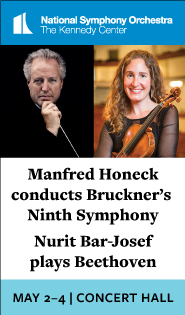Seraphic Fire offers a program of remembrance in Georgetown
Seraphic Fire made its latest visit to the Washington area on Sunday evening. The Miami-based chamber choir presented the Requiem Masses of Gabriel Fauré and Maurice Duruflé on the concert series at St. John’s Episcopal Church in Georgetown. The performance of the former work was dedicated to the victims of the Paris attacks one year ago, and the latter to the memory of Washington choral conductor J. Reilly Lewis. While heavy with admirable significance and beautifully performed, this was still a lot of late Romantic French choral music for one evening.
Shorter pieces introduced the Requiem Masses. Douglas J. Cuomo was one of eight composers commissioned by Seraphic Fire to create a new work for their 15th anniversary season. Heard in its third performance, The Fate of His Ashes: A Requiem for Victims of Power was a dud. Set to words taken haphazardly from a 17th-century essay, the piece had a uniformity across its ten minutes that quickly wore thin. Ostinati on enigmatic phrases (“human fragments,” “preserve the living,” or “in silence or time”) alternated with homophonic writing focused more on dissonant clusters of harmony than melodic interest. Stereotypical gestures of lament seemed hackneyed: descending augmented seconds, predominantly minor chords that turned major at the end.
Of the Requiems the Fauré came first. The tenor section had a unified, firm, but light sound together on the walking-pace melody of the “Introitus,” exceeded only by the airy treble-like sound of the soprano section, especially in the concluding “In Paradisum.” Organist Nathan Laube masterfully provided the accompaniment at the church’s relatively new organ, built by Quebec-based Casavant Frères in 2012.
Members of the choir provided the solo parts, with soprano Brenna Wells standing out for a laser-focused rendition of the “Pie Jesu.” It is the only movement in these Requiems where Duruflé does not surpass Fauré, although in the organ-only version it can be disappointingly plain. Laube pulled what he could out of the organ in his registrations, but throughout the evening one wished for a fuller range of sound colors.
It was Seraphic Fire’s misfortune to have scheduled the Duruflé Requiem on a weekend in which the National Symphony Orchestra performed the same work. It was not principally that one missed the richer orchestral version of the score, but that conductor Patrick Quigley and his singers seemed to miss some of the music’s meaning. At times, the performance was too taken with the brawn of these virtuoso voices, foregoing the focus on the simplicity of the chant that Duruflé sets so aptly. This Requiem has its broad, dramatic moments, but in the “Christe eleison,” for example, the maxed-out fortissimo sound stole some of the thunder from the Offertory that followed it.
Mezzo-soprano Margaret Lias was full-bodied of tone in this version of the “Pie Jesu,” the only part of the organ reduction where one regrets the loss of orchestral color. Understandably the composer added an “ad libitum” part for solo cello, covered here by the organ. Quigley took some fast tempos, especially in the “Lux aeterna,” only to take back the time gained by luxuriating over the end of the “In Paradisum” movement, as it expanded and came to its final rest on a dense major-minor 9th chord.
The Duruflé Requiem had a somewhat dark beginning, described by scholar James E. Frazier. The commission came in 1941 through Duruflé’s publisher, René Dommange, who was a supporter of the collaborationist Vichy regime. The same year, Dommange went to Vienna to mark the anniversary of Mozart’s death, an event organized by Joseph Goebbels.
Duruflé’s unaccompanied motet Ubi caritas, from 1960 and heard first on the concert, was the high point of the evening. Here the voices sounded softly in perfectly tuned close harmonies, always shaded to bring the chant-bearing voice to the fore. The conservative style of Duruflé’s music, seen as being in continuity with French and Catholic traditions, may have found favor in Vichy, but we should not dismiss it outright because of the composer’s dubious political history.







